Lecture 19 - Ocular II
1/68
There's no tags or description
Looks like no tags are added yet.
Name | Mastery | Learn | Test | Matching | Spaced |
|---|
No study sessions yet.
69 Terms
Cornea
Pathogens use what portal of entry through epithelial defects, stromal penetration, limbal diffusion, or endothelial injury?
Uvea
Pathogens use what portal of entry mainly through hematogenous spread, but also via trauma, aqueous, or vitreous diffusion of inflammatory mediators?
Lens
Pathogens use what portal of entry via trauma-penetration, pathogens, or toxins through the capsule, and also via the aqueous humor?
Retina, Vitreous humor
Pathogens use what two portals of entry via hematogenous spread, trauma, or extension from uveitis and endopthalmitis?
Eyelids, Conjunctiva
Pathogens use which two portals of entry via direct trauma, colonization by niche-adapted microbes, or hematogenous spread?
Corneal
What type of immunity is gained by a mixture of tears with antimicrobial proteins, intact epithelium, limbal leukocytic recruitment, and blink/menace reflexes?
Blood-Eye
What barrier uses tight junctions in the uveal and retinal vasculature to limit antigen entry, and preserve the immune privilege of the eye?
Anterior Chamber Immune Deviation
What immune system in the eye is abbreviated ACAID, and is a unique ocular immune tolerance using splenic regulatory T cell differentiation upon antigen entry?
Lens, Retina
Which two parts of the eye are immune-privileged sites relying on anatomic sequestration, with passive defenses like the capsule and blood-eye barrier?
Ulceration
What corneal injury can be shallow to deep, and can be caused by trauma, infection, or dessication? It may progress to a desmetocele or perforation.
Keratitis
What corneal injury involves inflammation due to infections like Moraxella or FHV-1? Immune responses can also cause it, like pannus or eosinophilic this condition.
Edema
What corneal injury can result from epithelial/endothelial injury, anterior lens luxation, or glaucoma, and leads to stromal hydration? A blue-grey haze will result from excess stromal water separating the collagen lamellae, and transparency depends on the epithelial barrier and endothelial pump being maintained, so the mechanism can be due to either of these failing.
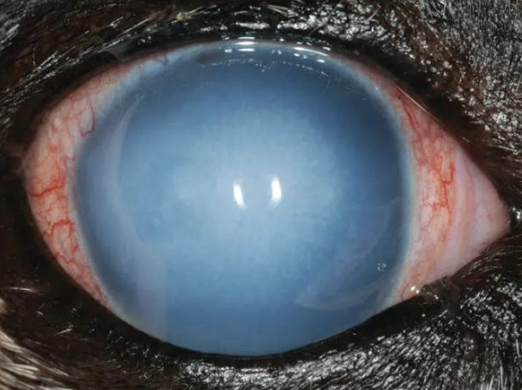
Cutaneous Metaplasia
What corneal injury/condition is when chronic irritation leads to keratinization, pigmentation, and vascularization of the corneal epithelium?
Yes
Can inflammation, infection, or neoplasia in one part of the eye easily spread throughout the eye via the uveal vasculature?
Secondary
What type of glaucoma can be caused by lesions in the ciliary body, trabecular meshwork, or anterior chamber angle impairing outflow of aqueous humor, causing this and leading to global optic nerve damage? It can be lens-induced, or due to uveitis, intraocular neoplasia, hyphema, surgery, or retinal detachment.
Yes
Once inflammation passes the blood-eye barrier, can it then spread easily between the anterior and posterior parts of the eye?
Intraocular
Elevation of what pressure in the eye can occur due to ICA blockage due lens luxation, hyphema, or inflammation, and causes retinal ganglion cell death and optic nerve atrophy?
Retinal
What disease, including detachment, can cause nutritional deprivation of the RPE and choroid, leading to atrophy and phthisis bulbi?
Space-occupying
Which type of lesions, such as tumors and abscesses, can distort intraocular anatomy, disrupt vascular perfusion, and induce retinal detachment or glaucoma?
Dogs
Meibomian gland adenomas/adenocarcinomas, squamous cell carcinomas, melanomas, and mast cell tumors are neoplasias common in the eyes of which animals?
Cats
Squamous cell carcinomas and lymphomas are neoplasias common to the eyes of which animals?
Facial
Paralysis of which cranial nerve results in the inability to close the eyelids?
Sympathetic
Lesions affecting which nervous system: parasympathetic or sympathetic, results in drooping of the eyes?
Ptosis
What is the term for drooping of the eyes, which can be caused by damage to sympathetic nerves?
Epiphora
What disease of the eye refers to excess tearing due to poor tear film distribution?
Epithelial barrier
Damage to which mechanism in the cornea can be due to corneal ulcers, keratomalacia, trauma, or chemical injury, and results in focal edema around the defect, and is fluorescein positive?
Endothelial pump
Damage to which mechanism in the cornea can be due to uveitis, glaucoma, lens luxation, endothelial dystrophy, intraocular surgery, trauma, or toxins (chlorhexidine, povidone-iodine, CAV-1) and causes diffuse edema, descemet membrane folds, keratic precipitates, and is fluorescein negative?
Epithelial barrier
Which mechanism of corneal edema: epithelial barrier or endothelial pump, will be fluorescein positive?
Non-ulcerative
Which type of keratitis can be chronic superficial (immune mediated), pigmentary (chronic irritation/entropion), or eosinophilic (cats with FHV-1)? It will result in corneal vascularization, pigmentation, scarring, reduced transparency, chronic irritation/discomfort, and progressive vision loss if untreated.
Ulcerative
Which type of keratitis can be traumatic (foreign bodies/eyelid abnormalities/contact injuries), infectious (P. aeruginosa, FHV-1, Aspergillus, Fusarium), exposure-related (facial nerve paralysis/lagopthalmos) or due to chemical burns? It will result in severe pain, reflex uveitis, corneal stroma loss, desmetocele formation, risk of perforation/endophthalmitis, permanent scarring, and vision impairment/blindness.
German Shepherds
Which dog breed is most prone to immune-mediated non-ulcerative keratitis?
Cats
Which animals can develop eosinophilic non-ulcerative keratitis, usually due to FHV-1 infection?
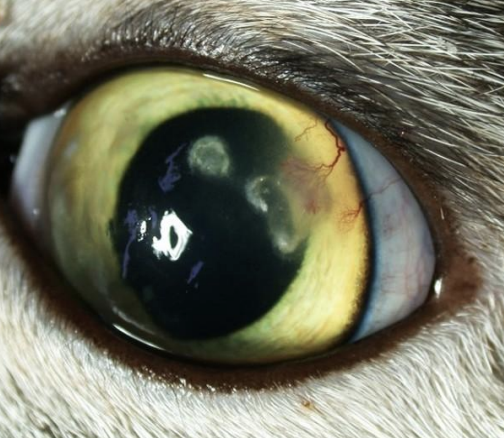
Infectious
Which type of uveitis can be due to Leptospira, Brucellosis, Lyme disease, FIP, FeLV, FIV, Distemper, Equine herpesvirus, EVA, Blastomyces, Cryptococcus, Histoplasma, Coccdioides, T. gondii, Onchocerca, or Leishmania, along with others?
Non-infectious
Which type of uveitis can be lens-induced, autoimmune, or immune-mediated?
Cats
In which animals is idiopathic uveitis most common?
Uveodermatologic
What syndrome is an autoimmune disorder targeting melanocytes, is most common in Akita, Husky, and other dogs, and causes bilateral granulomatous panuveitis (immune-mediated)? Skin and hair depigmentation will follow, and diagnosis is based on clinical signs and exclusion of other causes. Early aggressive immunosuppression is essential to preserve vision, but pigment changes are permanent.
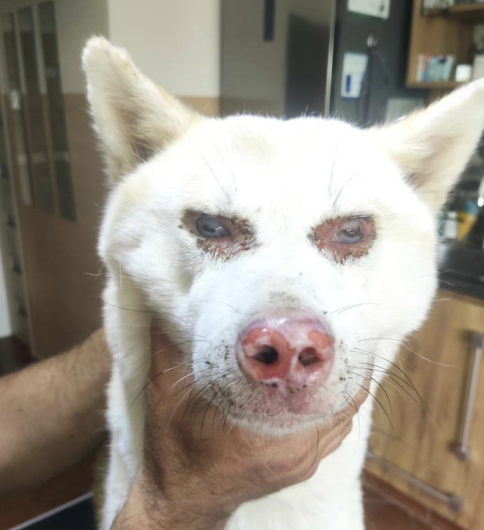
Uveitis
Ocular pain, vision loss, blindness, disruption of blood-eye barrier, hypopyon, hyphema, corneal changes (edema, vascularization), posterior segment damage, secondary glaucoma, cataract formation, and phthisis bulbi can all result from what eye structure infection/condition? It is often a manifestation of systemic disease, and should be investigated for underlying causes.
Primary
Which type of glaucoma is an inherited/anatomic predisposition, usually bilateral, and with asynchronous onset?
Goniodysgenesis
Which type of primary glaucoma is due to an abnormal iridocorneal angle and is seen in cocker spaniels, basset hounds, and Chow-chows?
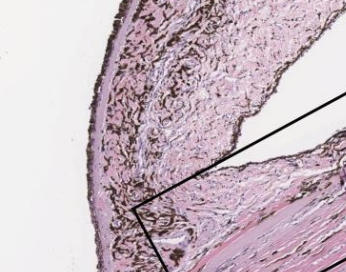
Open-angle
Which type of primary glaucoma is rare in animals and is due to gradual outflow impairment without angle closure?
Hyphema
What cause of secondary glaucoma is due to blood obstructing the trabecular meshwork?
Secondary
Which type of glaucoma is most common?
Yes
Will aqueous humor production remain normal during glaucoma?
Yes
Can even short-term IOP elevations cause irreversible vision loss?
Yes
Can corneal edema, exposure keratitis, mydriasis, buphthalmos, lens luxation, retinal degeneration, optic nerve atrophy, ocular pain, and permanent blindness all result from glaucoma? Some of these can also cause it.
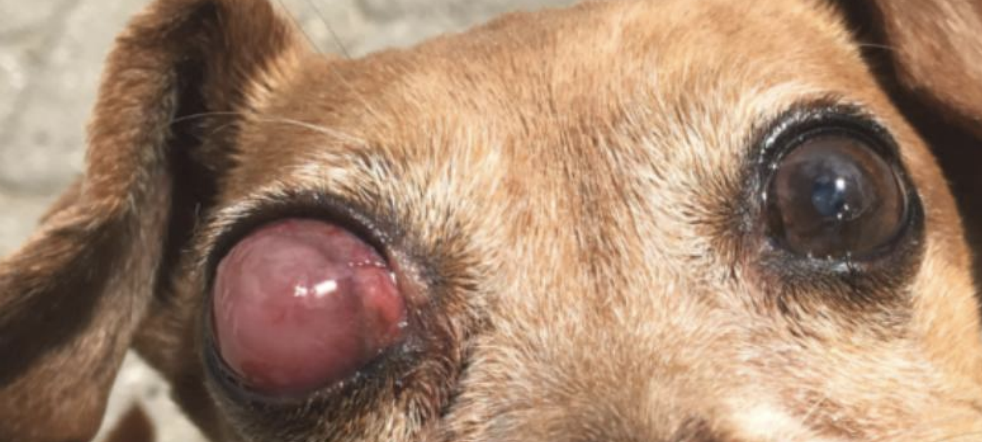
Dysplasia
What retinal disease is a developmental malformation which can be inherited (english springer spaniel, samoyed, beagle), due to in utero infection (canine herpesvirus, feline panleukopenia virus, bovine viral diarrhea), nutritional (vitamin A deficiency), or toxic/traumatic (intrauterine trauma, drug teratogenicity)?
Retinitis
What eye infection/structural inflammation can be infectious (distemper, FIP, FIV, FeLV, T. gondii, Onchocerca, ocular larval migrans, Blastomyces, Cryptococcus), immune-mediated (posterior uveitis, ERU in horses), or due to extension from adjacent tissues (choroiditis, optic neuritis)?
Dogs
Which animals are most prone to progressive retinal atrophy?
Taurine
Deficiency of what amino acid in cats can lead to retinal degeneration?
E
Deficiency of what vitamin in some species can cause retinal degeneration?
Enrofloxacin
What drug in cats can be toxic, causing retinal degeneration? Ionizing radiation can also cause this.

Diabetes
What metabolic disease can also contribute to retinal degeneration?
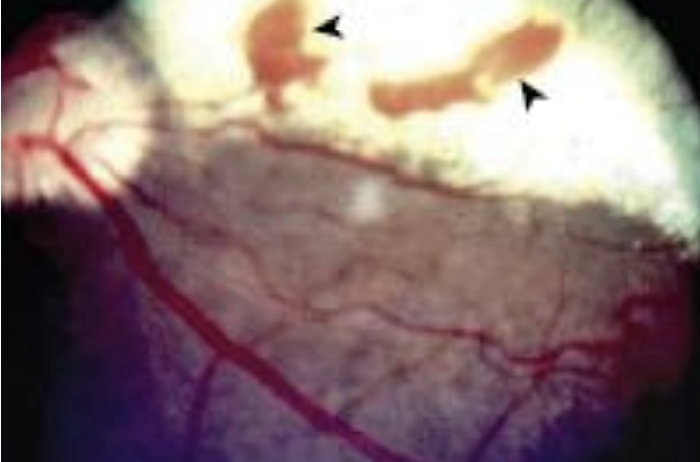
Yes
Can retinal degeneration be age-related?
Exudative
What type of retinal detachment can be due to glaucoma, inflammation, neoplasia (lymphoma), or hypertension (cats with CKD/hypertension)?
Rhegmatogenous
Which type of retinal detachment is due to retinal tears from trauma or degeneration (vitreous collapse)?
Tractional
Which type of retinal detachment involves fibrous membranes, such as post-inflammatory or post-hemorrhage?
Yes
Can retinal detachment be congenital?
Yes
Can nystagmus, night blindness, and ocular discomfort be consequences of retinal detachment?
Night blindness
What symptom is an early sign of PRA (progressive retinal atrophy)?
Coloboma
What anomaly is a notching or absence of part of the lens? It is often seen along with persistent fetal vasculature.
Cataracts
Persistent pupillary membranes may adhere to the lens, causing focal what lesions?
Persistent hyperplastic primary vitreous
What condition, abbreviated PHPV, refers to fibrovascular remnants from the fetal vasculature remaining attached to the posterior lens capsule?
Spherophakia
What is the term for an abnormally round lens, which may predispose it to luxation?
Dogs
Which animals are most prone to inherited cataracts?
Amino acids
Deficiencies of what in young animals can lead to cataract formation?
Primary
Which type of lens luxation is due to inherited zonular weakness and is seen in terriers and shar peis?
Secondary
Which type of lens luxation is due to trauma, chronic glaucoma, or hypermature cataracts, leading to zonular rupture from swelling or shrinkage?
Anterior
Which type of lens luxation is when it falls into the anterior chamber, involving risk of acute glaucoma and corneal edema?
Posterior
Which type of lens luxation is when it falls into the vitreous chamber, which is less acute than the other type but can cause retinal damage?